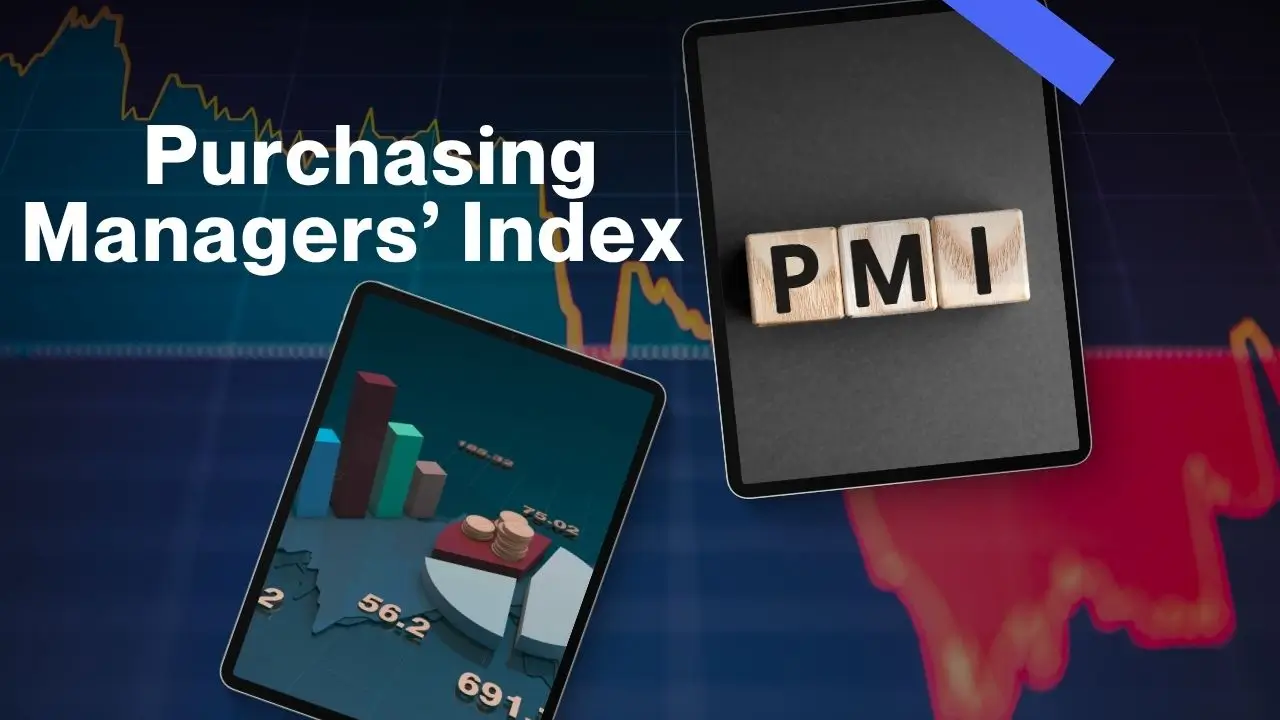Share
PMI Index – Why It’s the “Golden Indicator” for Global Investors
20 tháng 10 2025
The Purchasing Managers’ Index (PMI) is often called the “golden indicator” of the economy, providing early signals about growth, inflation, and investment trends. This article explains why PMI is a must-watch data point for investors worldwide.

1. What Is the PMI Index?
The Purchasing Managers’ Index (PMI) is one of the most closely watched economic indicators, offering a snapshot of an economy’s health through manufacturing and service activities.
It is based on surveys of purchasing managers who provide insights on new orders, output, employment, supplier delivery times, and inventories.
Above 50: Expansion in economic activity
Below 50: Contraction in economic activity
Because PMI reflects future expectations rather than past performance, it is considered an early warning system for economic cycles — expansion or slowdown.
2. Why PMI Is the “Golden Indicator” for Investors
🕒 Provides Early Signals Before GDP Data
While GDP figures are released with a lag of several months, PMI data are published at the beginning of each month, making them a leading indicator of economic trends.
For example, if PMI readings fall for three consecutive months, it may indicate weaker demand or slowing production, foreshadowing a potential dip in GDP.
📊 Direct Impact on Financial Markets
Equities: Strong PMI readings boost investor sentiment, driving up stocks in manufacturing and consumer sectors.
Bonds: Weak PMI numbers prompt investors to move toward safe-haven assets, pushing yields lower.
Currencies: Economies with higher PMI readings often see their currencies appreciate against peers.
💰 Guides Central Bank Policy
Major central banks — including the Federal Reserve (Fed), European Central Bank (ECB), and Bank of Japan (BoJ) — use PMI as a barometer of growth momentum.
A sharp drop in PMI can prompt rate cuts, while strong PMI growth may raise inflation concerns and lead to tighter monetary policy.
3. Key Types of PMI You Should Know
🏭 Manufacturing PMI
Tracks industrial activity and is highly sensitive to economic cycles.
→ This is the most closely monitored PMI globally.
🏢 Services PMI
Measures performance in the service sector, which often makes up the largest share of GDP.
→ A strong Services PMI signals healthy consumption and employment.
🌍 Composite PMI
Combines both manufacturing and services, offering a broader view of overall economic performance.
4. Markets That Closely Watch PMI Data
United States: The ISM Manufacturing PMI is regarded as the global benchmark.
Eurozone: PMI figures released by S&P Global often move the euro (EUR) significantly.
China: Both NBS and Caixin PMIs are key for gauging global commodity and Asian market trends.
For example, when China’s PMI drops below 50, it often triggers declines in oil, copper, and regional stock markets due to concerns about global demand.
5. How Investors Use PMI in Their Strategies
Track Ongoing Trends:
A string of two or three consecutive PMI declines can signal the start of a market correction.
Compare PMIs Across Regions:
Investors can favor markets with stronger PMI momentum (e.g., U.S. > Eurozone > China).
Combine with Other Indicators:
Use PMI alongside inflation (CPI), employment, and interest rate data to identify economic cycles and entry points.
6. Limitations of the PMI Index
PMI is survey-based, meaning it may reflect short-term sentiment rather than hard data.
It excludes the public sector, which can skew the overall economic picture.
Therefore, investors should treat PMI as one tool among many — not a standalone decision-maker.
7. Conclusion: PMI as the Compass of Global Capital Flows
In an era of growing uncertainty, PMI remains one of the most valuable and timely indicators for investors.
Whether you’re a short-term trader or long-term investor, understanding PMI trends helps you anticipate market movements, manage risks, and seize opportunities throughout the economic cycle.
FAQs
1. How often is PMI released?
→ PMI is published monthly, usually within the first few days of the following month.
2. How does PMI affect forex markets?
→ A stronger PMI typically supports the domestic currency, as it signals a robust economic outlook.
3. What’s the relationship between PMI and GDP?
→ PMI acts as a leading indicator, offering insight before official GDP data are released.
4. Which PMI report is most important globally?
→ The U.S. ISM Manufacturing PMI is widely regarded as the most influential economic indicator for global markets.
All information on our website is for general reference only, investors need to consider and take responsibility for all their investment actions. Info Finance is not responsible for any actions of investors.







